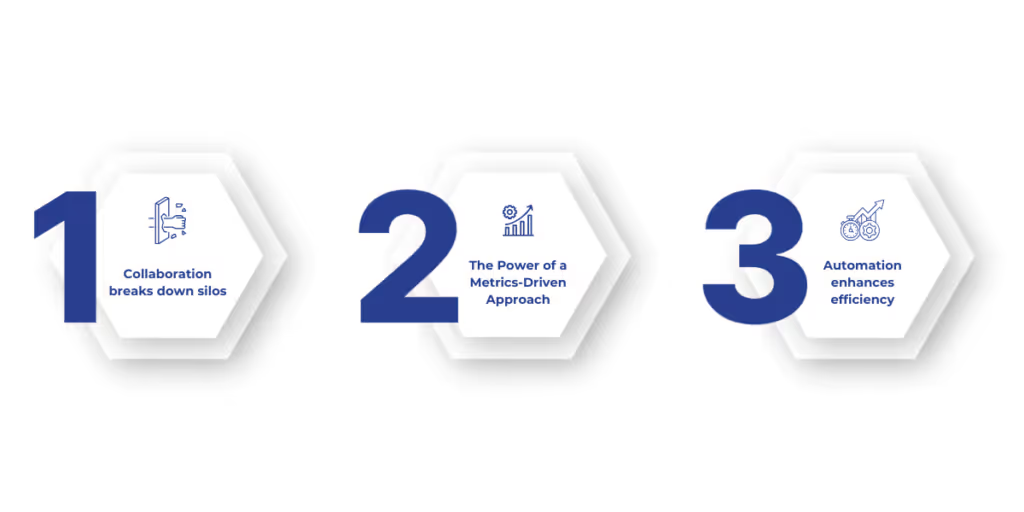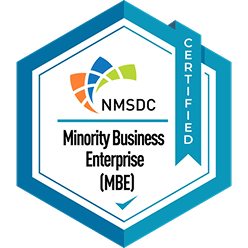

The race to deliver high-quality applications quickly is more competitive than ever. As organizations strive to improve their release cycles, an important question emerges: how can DevOps and SRE make software releases faster and more reliable? This inquiry highlights the critical intersection of speed and stability and invites a deeper exploration into two powerful methodologies reshaping the tech landscape.
While DevOps promotes collaboration and automation, Site Reliability Engineering (SRE) meticulously engineers reliability into every deployment, ensuring that speed does not come at the expense of performance.
As we delve into the nuanced differences between these two approaches, we'll uncover how their unique strengths can be harnessed to create a seamless, efficient, resilient software release pipeline that meets today's users' demands.
DevOps and Site Reliability Engineering (SRE) play crucial roles in making software releases faster and more reliable. DevOps emphasizes collaboration across teams, breaking down silos to streamline workflows. In contrast, SRE focuses on engineering reliability into systems, ensuring that every release maintains optimal performance. They create a powerful synergy that can transform how organizations deliver software.
Understanding the definitions and roles of SRE and DevOps is crucial. DevOps is a cultural movement that improves collaboration between development and operations teams. It aims to enhance software delivery through continuous integration and continuous delivery (CI/CD). On the other hand, SRE applies engineering principles to operations, focusing on system reliability and performance. SREs work closely with developers to build scalable systems while ensuring that services remain dependable.
The importance of these methodologies in modern software development cannot be overstated. With increasing competition and user expectations, organizations must deliver high-quality applications quickly. DevOps practices enable faster release cycles by automating processes and improving team communication. Meanwhile, SRE ensures that these releases do not compromise system stability or user experience.
SRE and DevOps together empower organizations to deliver faster, more reliable software releases, making it essential to understand the core principles of SRE.

Site Reliability Engineering (SRE) ensures systems are resilient and reliable, even in the face of inevitable challenges. Organizations can build infrastructures that support rapid deployment by adopting SRE principles without compromising performance.
At its core, SRE acknowledges that failures are inevitable and prepares for them through proactive design and operational resilience. For instance, a financial services company implemented SRE practices, reducing service outages significantly and earning greater customer trust.
Another key principle of SRE is metrics-driven monitoring. Service Level Indicators (SLIs) measure system performance, while Service Level Objectives (SLOs) define reliability targets. These metrics allow teams to balance speed and stability. A retail company, for example, prioritized uptime during peak shopping seasons by aligning SLOs with customer expectations, resulting in smoother operations.
Automation is another cornerstone of SRE, enabling scalability and efficiency. By automating repetitive tasks, teams can focus on innovation and strategic improvements. For example, a tech startup leveraged automation to streamline deployments, allowing them to release updates multiple times a day with high reliability.
As we transition to the core principles of DevOps, it’s clear that both methodologies share a common goal: improving software release speed and reliability.
DevOps unites software development and IT operations into a cohesive force, driving efficiency and innovation. This integration is not just about merging teams; it’s about creating a culture that fosters collaboration and shared responsibility.
DevOps breaks down traditional barriers between development and operations teams. This collaboration leads to faster problem-solving and smoother workflows.
DevOps’s heart lies in the practice of Continuous Integration (CI) and Continuous Deployment (CD). CI involves regularly merging code changes into a central repository, allowing teams to detect issues early. The CD takes it further by automatically deploying these changes to production, ensuring that updates reach users quickly. A financial services firm implemented CI/CD practices and reduced deployment time from weeks to hours, significantly enhancing responsiveness to market changes.
Automation is crucial in DevOps. It minimizes manual tasks, reduces errors, and frees up developers’ time to focus on innovation. Collaboration tools enhance communication across teams, ensuring everyone is aligned on goals. Lean principles further streamline processes by eliminating waste and focusing on value delivery.
Having explored the core principles of DevOps, it’s important to examine how it contrasts with SRE.
Understanding the key differences between Site Reliability Engineering (SRE) and DevOps is essential for organizations aiming to enhance software release speed and reliability.
AspectSite Reliability Engineering (SRE)DevOpsFocus Prioritizes production stability and system reliability.Emphasizes the entire software lifecycle and collaborative culture.MetricsUtilizes metrics like Service Level Agreements (SLAs) for reliability.Focuses on rapid development and delivery cycles through CI/CD practices.CollaborationWorks closely with developers to ensure system performance.Encourages cross-functional collaboration among development, operations, and other teams.AutomationAutomates operational tasks to maintain system uptime.Automates the software development process to speed up releases.GoalAims to minimize downtime and enhance user experience.Seeks to improve delivery speed while maintaining quality and reliability.
Next, let’s delve into how these methodologies complement each other, unlocking their full potential to drive excellence in software development.
Businesses prioritize delivering high-quality software quickly. However, speed without reliability can harm customer trust and satisfaction. To strike the right balance, DevOps and Site Reliability Engineering (SRE) offer proven methods to improve software releases. Let’s explore how their core practices help businesses achieve both speed and stability.
SRE focuses on making systems reliable and resilient. At its core are metrics like Service Level Indicators (SLIs) and Service Level Objectives (SLOs). These tools help measure and maintain performance. For instance, a manufacturing company adopted SLOs to ensure system uptime during peak production. The result? Fewer outages and smoother operations.
SRE teams also prepare for failures. Instead of aiming for perfection, they design systems to recover quickly from disruptions. A financial services vendor, for example, reduced downtime by using SRE principles. They maintained reliability even during high-traffic periods by automating incident responses and setting error budgets.
DevOps accelerates delivery with practices like Continuous Integration and Continuous Deployment (CI/CD). Businesses can release updates faster without risking quality by automating testing and deployments.
DevOps also thrives on collaboration between teams. Breaking silos improves communication and ensures smoother workflows. This shared effort eliminates bottlenecks, speeding up software delivery while maintaining consistency.
Both SRE and DevOps prioritize monitoring and feedback to ensure stability. While DevOps emphasizes feedback at every stage of the software lifecycle, SRE focuses on operational monitoring.
To fully optimize software release speed and reliability, it’s essential to understand how SRE and DevOps work together. Their collaboration bridges the gap between rapid deployments and system stability, creating a more balanced and effective development process.
SRE and DevOps are not competing methodologies. They complement each other to improve software delivery processes, allowing businesses to release faster while maintaining reliability.
DevOps focuses on efficiency, while SRE ensures operational stability. At the same time, SRE teams managed error budgets to keep systems stable. This collaboration ensured smooth sales without downtime.
While DevOps optimizes workflows and speeds up releases, SRE handles system health. This shared focus strengthens both reliability and agility. A technology company adopted this dual approach, leading to better system performance and faster market response.
SRE and DevOps both emphasize accountability. DevOps focuses on team collaboration, while SRE incorporates reliability. Together, they build fast, reliable, and scalable processes.
Next, we explore how the collaborative relationship between SRE and DevOps translates into practical strategies for optimizing software release processes.

Refining release processes is crucial for organizations focused on quickly and reliably delivering high-quality software. Businesses can streamline workflows and achieve better outcomes by prioritizing collaboration, metrics, and automation.
Collaboration is key to efficient software releases. When development, operations, and other teams work seamlessly together, spotting and addressing issues early in the process becomes easier. Breaking down silos ensures that all teams are aligned on objectives, which leads to faster decision-making and smoother deployments.
Metrics are fundamental to understanding and improving software release processes. Key Performance Indicators (KPIs) like deployment frequency, lead time, and change failure rates offer actionable insights. By continuously monitoring these metrics, teams can pinpoint bottlenecks and identify opportunities for improvement. This data-driven approach empowers teams to make informed decisions, leading to more reliable releases.
Automation is a game-changer in software release processes. By automating routine tasks like testing and deployment, teams can reduce manual errors and speed up workflows. Automation allows teams to release more frequently and with greater consistency. It helps reduce human error and enables developers to focus on more strategic tasks, ultimately enhancing both speed and quality.
With the rise of automation and data-driven decision-making, organizations can respond quickly to changing market demands. By adopting SRE and DevOps, businesses improve release processes and build a foundation for sustained growth while meeting evolving customer expectations.
Adopting SRE and DevOps is a strategic move toward streamlined workflows, reduced downtime, and continuous innovation. Organizations that embrace these methodologies build a strong foundation for sustained growth and meet customer expectations for speed and quality.
At WaferWire, we understand the importance of this integration. Our end-to-end services support your digital transformation journey, ensuring your organization can leverage the full potential of SRE and DevOps. Whether you’re looking to streamline your software delivery or enhance system reliability, we are here to help. Take the first step toward a more efficient future. Connect with us today!

